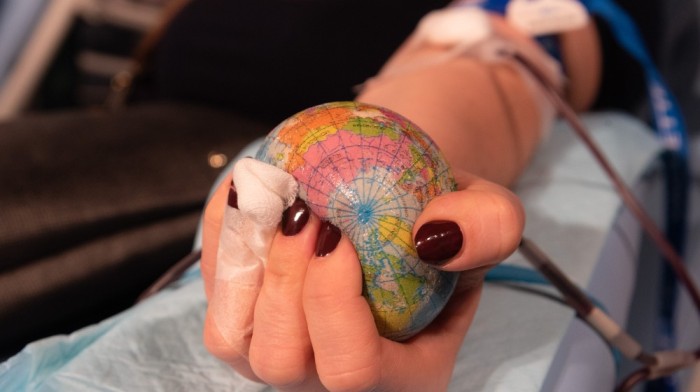
While every January is National Blood Donor Month in the U.S., someone is in need of a blood or platelet transfusion every two seconds.
Claudia Cohn, MD, PhD, is a pathologist with University of Minnesota Physicians (M Physicians) and also the chief medical officer for the American Association for Blood and Biotherapeutics (AABB). Dr. Cohn says that, especially this National Blood Donor Month, the need for blood is urgent.
Critical levels
During the winter months, blood supply is typically lower as blood donations cyclically decrease because of the holidays, travel schedules, inclement weather and illness. “That is severely compounded this year with the raging COVID-19 pandemic, which has overwhelmed hospitals and canceled numerous blood drives throughout the past year and a half,” Dr. Cohn says.
Beyond that, with many people now working or schooling remotely, there has been lower turnout at blood drives hosted by workplaces, schools and colleges, and other community groups.
Despite the pandemic and decline in blood donations, the need for blood is still ever-present. According to Memorial Blood Centers, there is currently only a one- to two-day supply of most blood types. For O negative (O-), the universal blood donor type, levels are even lower at less than a single day’s supply. The ideal volume is five to seven days.
“Victims of car accidents still arrive in emergency departments, cancer patients still require chemotherapy, all of which use life-saving blood transfusions,” Dr. Cohn explains. According to the American Red Cross, a single car accident victim may need up to 100 units of blood.
How communities can help
Dr. Cohn encourages anyone who is interested in donating blood to make an appointment at a local blood center. The impact of a single donation, according to the American Red Cross, may save up to three lives.
Donors can also extend their impact by volunteering or inviting friends and family to give or volunteer with them.
To protect donors, volunteers and staff during the pandemic, Dr. Cohn assures that blood donation sites are taking measures to ensure safety. These steps include:
- Staggered donation appointments to avoid groups of people standing in line
- Maintaining social distancing
- Frequently wiping down surfaces
- Masking for all personnel
Further, people who wish to donate blood are evaluated for any sort of illness before giving, and there is no evidence that COVID-19 can be spread or contracted through blood donations or transfusions.
“It is probably safer to donate blood than it is to go to a crowded supermarket,” Dr. Cohn says.
Where to donate
Blood donation centers with the American Red Cross and Memorial Blood Centers are open across the Twin Cities and Greater Minnesota in addition to already-scheduled local blood drive events.
For more information on how to donate, where to make an appointment or how to find a local blood drive, visit the American Red Cross or Memorial Blood Centers websites.
